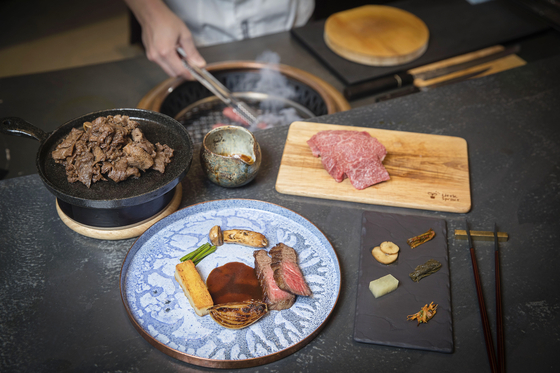When omakase meets Korean beef

Moon Jung-hoon
The author is a professor at the Department of Agricultural Economics and Rural Development at the Seoul National University.
The word “omakase” has deeply penetrated our daily lives. Omakase, meaning “left to the chef” in Japanese, refers to a dining in which a chef serves food with today’s ingredients rather than the choices of the customers. Originating in high-end sushi restaurants in Japan, omakase has spread globally, and has become a high-end Japanese full-course meal where customers enjoy the pleasure of unexpected ingredients of the day and the various cooking skills of the chef, not limited to specific ingredients.
When omakase came to Korea, it became a new food genre with a rather awkward name of hanwoo omakase serving Korean beef, one of Koreans’ favorite ingredients. It is offered at fancy restaurants offering dishes made with various cuts of Korean beef in various cooking styles as a course meal.
Omakase is known as a traditional Japanese culinary culture, but in fact, it is rather a recent trend in Japan as well. Cooking and serving the catch of the day at restaurants near fish markets is considered the origin of omakase. A similar practice can be found in Korea, the silbijib restaurants near ports of Busan and Tongyeong. They remain in Gukje Market in Busan, offering free “snacks of the day” for each bottle of alcohol. Most of them are seafood, and there is no set menu. It is the unique culinary culture in the fishing towns that rely on chance.
The concept of omakase emerged in Japan during the bubble economy from the mid-1980s to the early 1990s. Sushi was a fairly high-end dish in Japan, and not everyone could afford to go to sushi restaurants. However, the unprecedented economic boom of the bubble economy drastically increased the number of the new rich who could afford to enjoy sushi. They flocked to the high-end sushi restaurants that were out of reach. However, the customers were not familiar with fish names and wanted to enjoy fancy food and drinks without being price conscious. That’s how omakase emerged, letting the chef choose for them. Through the 1990s, omakase expanded to food items other than sushi.
Omakase became widely known in Korea after Korea and Japan implemented visa-free entry in 2006. As the nature of visits to Japan changed from group tours to hot springs to backpacking for young people, sushi restaurants at Tsukiji Fish Market in Tokyo have become a must-visit site, and many people first experience omakase style there. Since then, Japanese restaurants aspiring to offer omakase have opened in Hongdae, also focusing on seafood and sushi. Japanese restaurants in luxury hotels and Japanese bars began to offer omakase. As time passed, omakase evolved into Korean style, and hanwoo omakase emerged.
In 2014, Seonjeongsaenghanwoo in Busan first offered a hanwoo omakase menu, and in 2015, Born and Bred in Majang-dong, Seongdong-gu, Seoul, began serving high-end hanwoo omakase, starting a stir. Young office workers raved over hanwoo omakase, often exceeding 200,000 won, and a culture of “let’s save up and have hanwoo omakase on a special day” was created.
Hanwoo omakase is going in a very different direction from the meaning of omakase, as it delicately deals with Korean beef rather than daily changing seasonal ingredients. Instead of simply grilling different parts of hanwoo, beef is boiled with other ingredients, slightly charred, or made into a sandwich to offer a new experience.

Due to the economic recession, restaurants offering hanwoo omakase, hanwoo chef’s special, and hanwoo all-you-can-eat are closing their businesses. I think it can be continued to be enjoyed when the price of Korean beef is lowered, or the economy is revived.










with the Korea JoongAng Daily
To write comments, please log in to one of the accounts.
Standards Board Policy (0/250자)